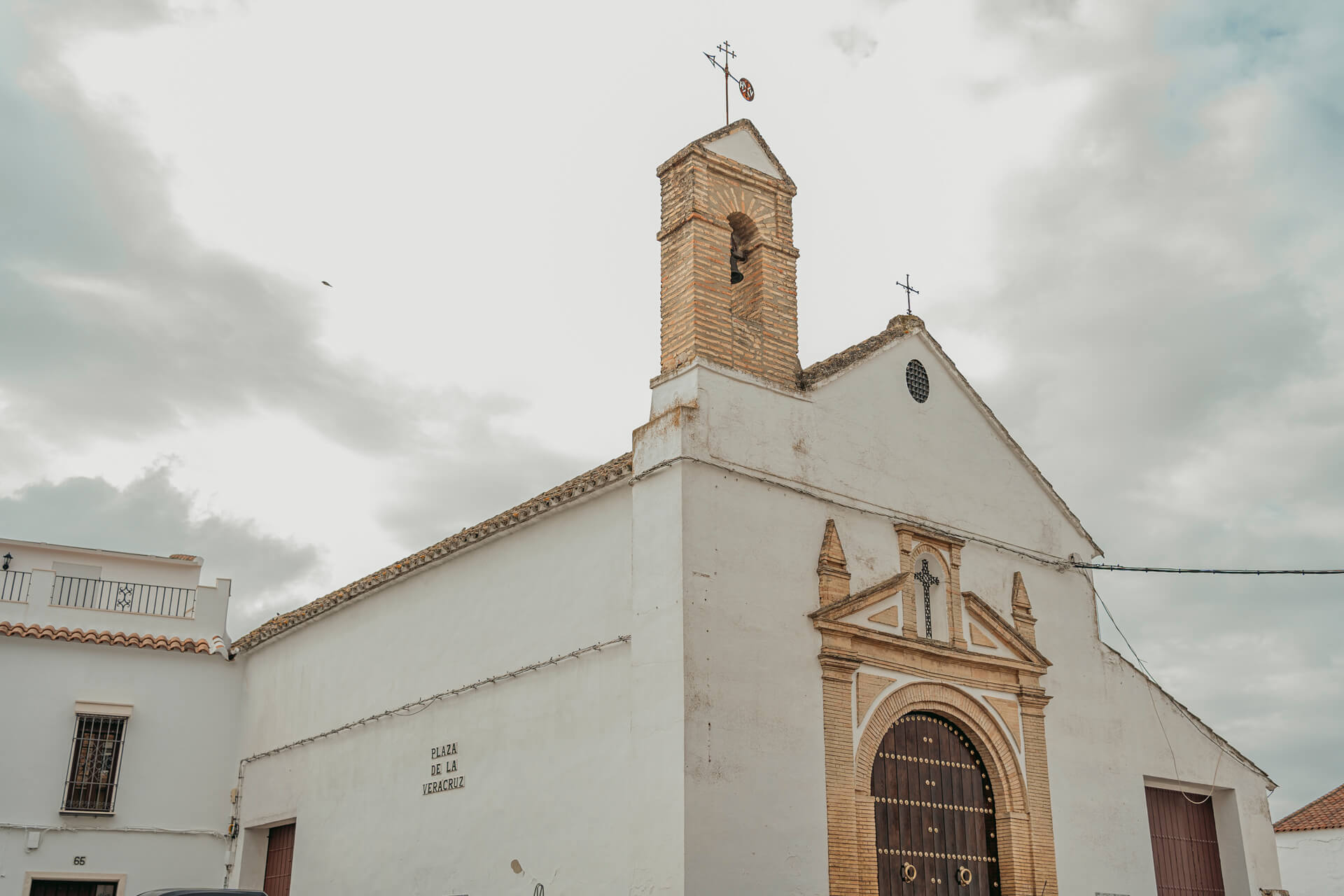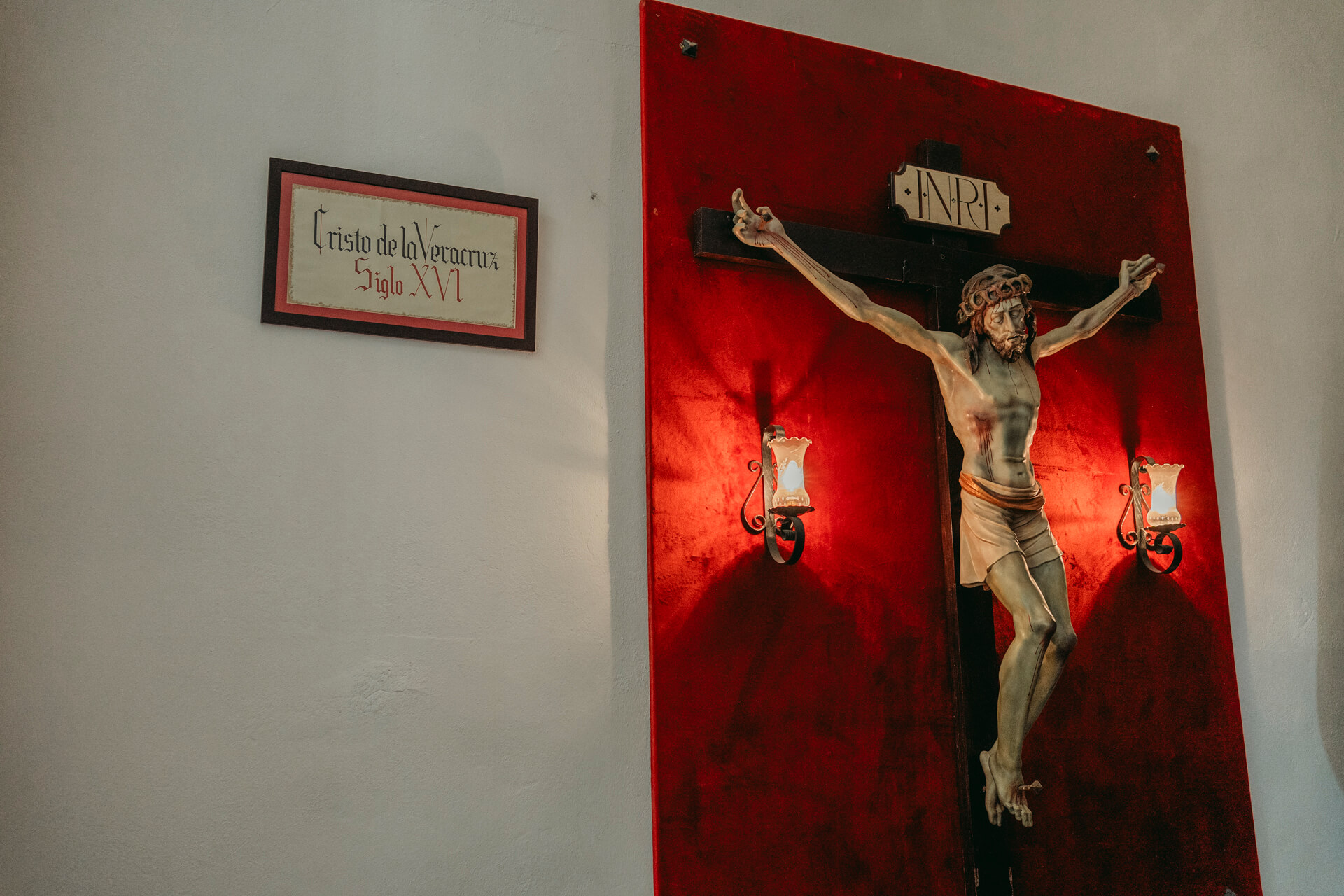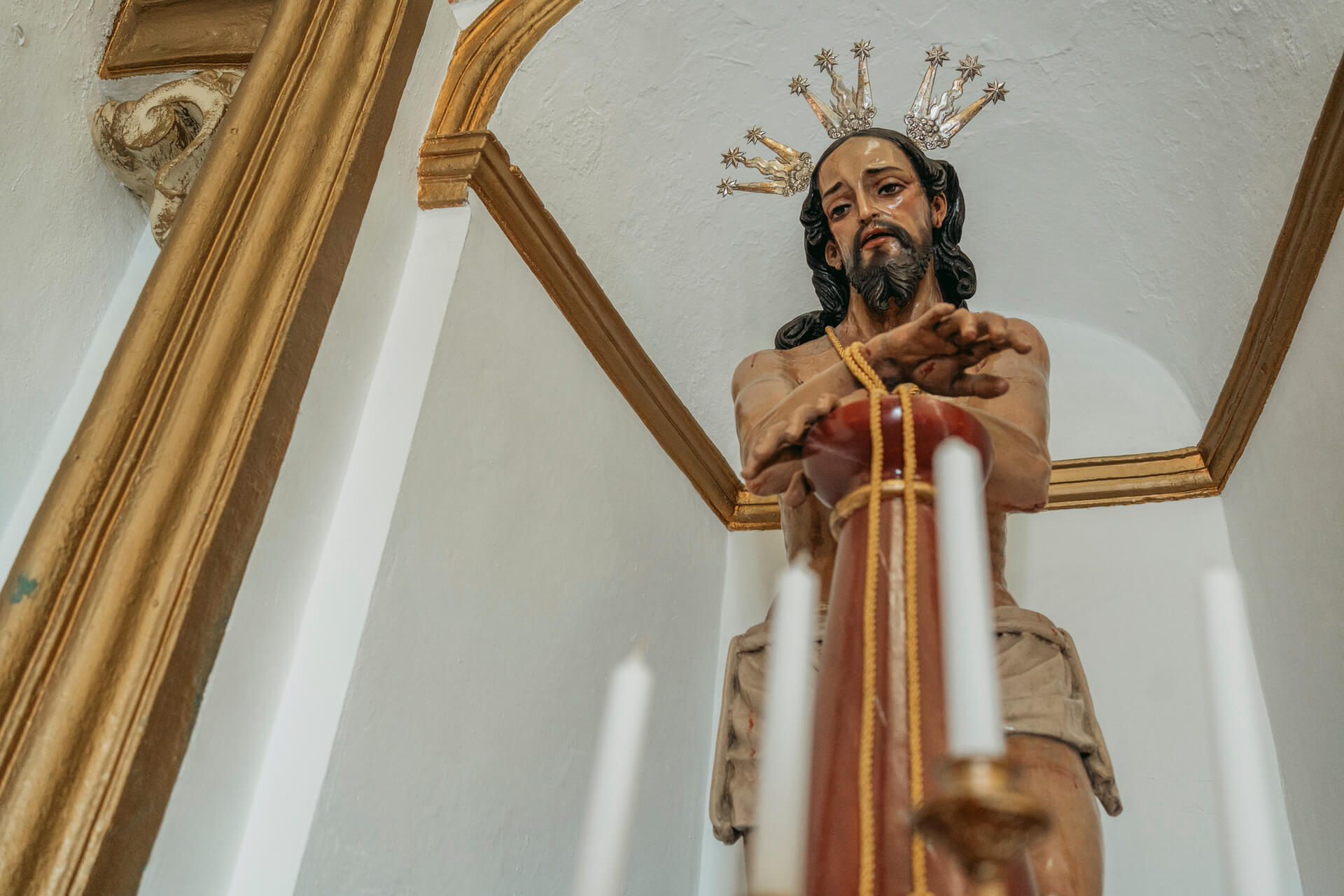VERA CRUZ HERMITAGE
'In one of the original entrances to Montemayor is where this church can be located, one of the Baroque jewels of the municipality' .



Located at the north part of the town, in one of its original entrances, this church was originally built in the second half of the 16th Century. It is, therefore, the oldest hermitage in Montemayor. Taking Mudejar architecture as a role model, so common in the municipality of Montemayor, its structure is formed by a long nave with a square head. Originally, the roofs were wooden coffered ceilings that later in the 18th Century were transformed into vaults.
The beauty is in the details.
Within the vaults, the one at the head stands out: a lowered dome supported by pendentives whose decoration is made up of geometric plates that form a radial composition of a great beauty.
The exterior of the church is simple, and it is where the purity of the white of the lime alternates with the exposed bricks. The main portal of the church consists of a semicircular arch that appears flanked by pilasters. Above them, rests an entablature with a split pediment, and in the center, the cross in a small niche. The belfry that crowns the church is from the 17th Century.
What you will see inside.
Some of the most important images of Montemayor are venerated in this hermitage. The Virgen de la Candelaria, who processions during Holy Week as Virgen de la Soledad. The Sevillian school of the 17th Century is represented with a magnificent carving of Saint Joseph.
A carving of a Crucified from the 16th Century, in a very expressionist style, provides the component of artistic quality. Finally, the carving of Christ tied to the column, 17th Century, it is of great devotion among Montemayor’s people.
The Vera Cruz Brotherhood is one of the largest, with more than 500 brothers and sisters.
The legend of the Vera Cruz
The Vera Cruz (or Saint Cross) is, according to Christian tradition, the cross where Jesus of Nazareth was crucified. Within the Catholic religion it is considered one of the great relics. Following ‘The Golden Legend of Santiago de la Vorágine’, around 326, the Empress Helena of Constantinople (mother of Constantine I, the Great) in her search for the Holy Places in Jerusalem, had the temple of Venus that was located on the demolished Mount Calvary.
He ordered the excavation of the mountain where, following the tradition, they found three crosses: Jesus’ one, and the two thieves’. Against the difficulty of knowing which was the cross of Christ, the legend tells that the Empress ordered a sick man to be brought. When approaching to one of the crosses, his health worsened enormously (this being from the thief Gestas). They immediately brought him closer to the next one, and his health returned to the same state as at the beginning (it was the cross of the good thief Dimas). When he was touched by the last one, he fully recovered his health. They had found the Vera Cruz.
There are numerous relics of the Holy Cross scattered throughout the Holy Land and Old Europe. The cult of the Vera Cruz spread throughout the Christian world, That is why there are numerous churches scattered throughout the towns with this name, such as the one in Montemayor, as a symbol of one of the most important relics of Christianity.



